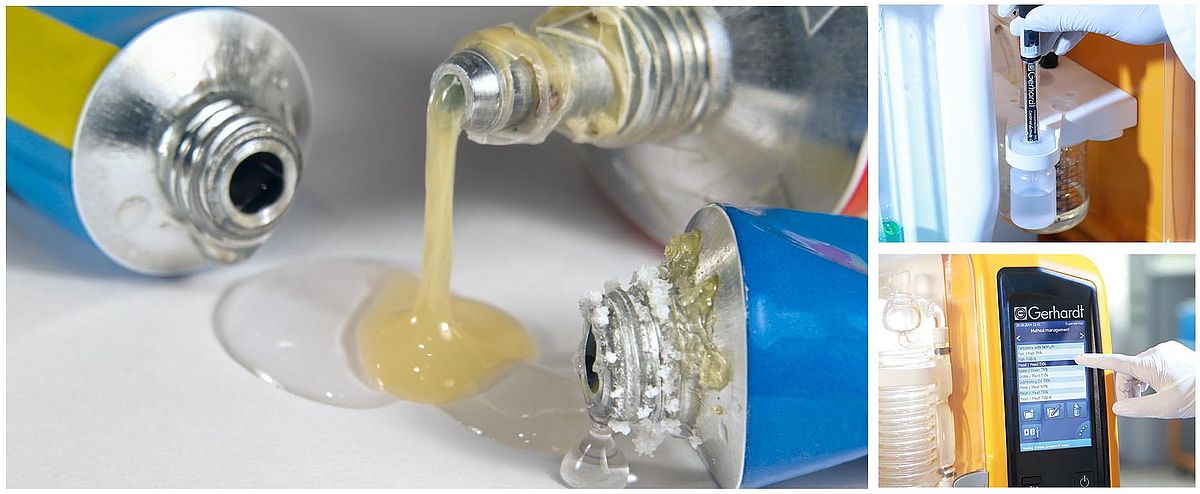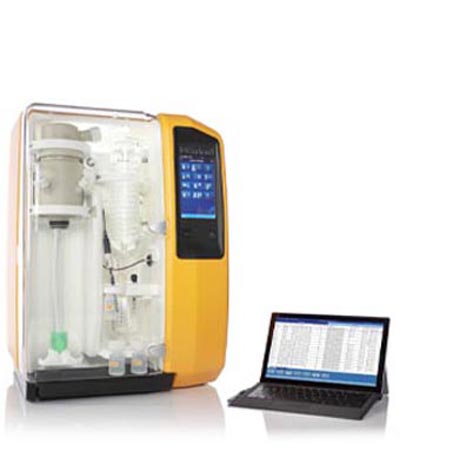The use of formaldehyde in construction and wood-based composites
Formaldehyde, also known as methanal, is an organic chemical compound and belongs to the aldehyde group of substances. Due to its versatile applicability, it can be found in a large number of different products. It is mainly used as an adhesive and binder in the construction materials and furniture industry. In addition to wall paints and insulating materials, it is mainly used in wood-based composites such as chipboard or laminate and in wooden furniture as an adhesive in the form of urea-formaldehyde resins or UF resins (aminoplastics).
However, the use of formaldehyde is not entirely harmless, as it has highly toxic properties and is considered a hazardous substance. As a volatile organic compound, formaldehyde evaporates from the mentioned wood composites and furniture at room temperature and then mixes with the indoor air.
When released in this form, it irritates the respiratory tracts, skin and mucous membranes, causes headaches, triggers allergies and is suspected of causing cancer. This is why, for example, there have been strict emission classes for chipboard and other wood-based composites in the EU since the beginning of the 1980s. These classes distinguish between the different degrees of formaldehyde evaporation:
E0 – evaporation no higher than natural wood
E1 – evaporates maximum 0.1 parts per million (ppm)
E2 – up to 1 ppm
E3 – up to 2.3 ppm
In Europe, only products with emission classes E0 or E1 are allowed to be sold in the meantime. In the case of important labels, such as the Blue Angel, the award is tied to compliance with emission class E0. Many labels can therefore not be awarded to products with higher classes.
In addition to compliance with emission classes, the optimal formaldehyde content in UF resins also plays a major role for other product properties. For example, the proportion of formaldehyde compared to urea cannot be lowered as much as desired, as otherwise moisture resistance or adhesion, among other things, would be negatively affected. Manufacturers of UF resins must therefore find the best possible compromise between low formaldehyde emission and the resistance of the adhesive.
This results in a great need for the determination of formaldehyde in wood-based composites or UF resins. With the application "Total Formaldehyde Determination" and the VAPODEST steam distillation system, the formaldehyde content in wood-based composites or the UF resins used can be precisely determined and is therefore the ideal system for environmental, quality assurance or contract laboratories.
Formaldehyde determination in adhesives and binders
Determination of blank value:
The distillation of formaldehyde is determined by titration using a fixed pH endpoint. The fixed pH endpoint is based on the blank value of the chemicals. In the first step, this blank value is determined via a blank distillation of phosphoric acid and 10 ml distilled water.
- App note: The template solution should be produced on a daily basis for high accuracy.
Addition of phosphoric acid:
A representative and homogenised sample quantity is weighed or pipetted into a distillation flask with an accuracy of 0.1 mg. Now the phosphoric acid is added and the distillation can be started.
- App note: There should be as little time as possible between the addition of the phosphoric acid and the clamping of the glass. The automatic addition of the phosphoric acid in the VAPODEST systems eliminates the risk of releasing the formaldehyde too early.
Distillation:
During distillation, the formaldehyde is collected in the receiver solution and titrated to the fixed pH endpoint (usually between 3.4-3.5) in the last step using a sodium hydroxide solution (NaOH).
- App note: For high precision, the NaOH used here should be as fresh as possible and the titer should be checked regularly.
Evaluation:
A validation of the results is possible via the standard check of a purchased formalin solution.
- App note: The VAPODEST 550 C can analyse up to 20 formaldehyde samples fully automatically.


